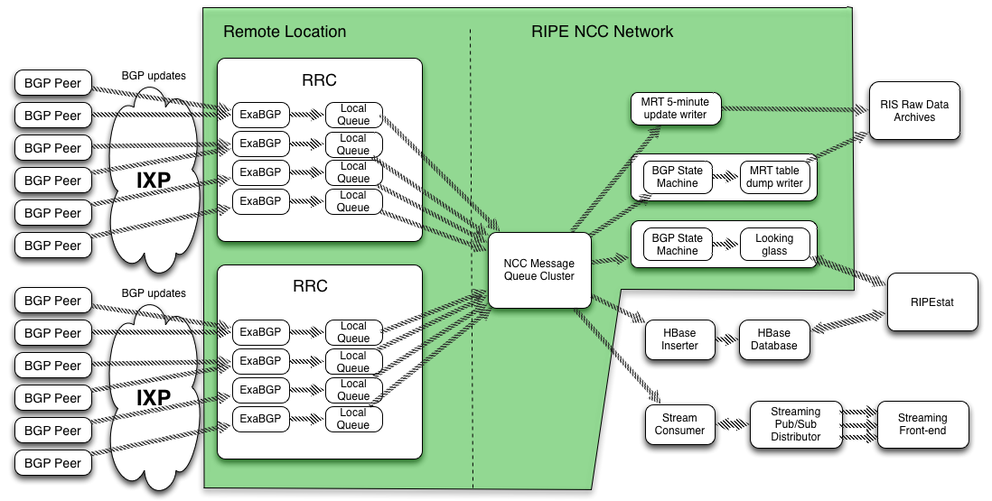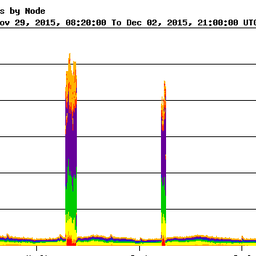We are starting to migrate the RIPE NCC RIS route collectors to the new data collection architecture.
As described in Updates to the RIPE NCC Routing Information Service (RIS), we are moving to a new data collection architecture for the RIS route collectors (RRCs). In addition to improved collector scalability, this will give us an improved queuing transport mechanism and a direct feed of the collectors' data to our backends. This allows us to build future services that will make network events available in our datasets much quicker than we can currently do. After migrating the RRCs we will be able to add more peering sessions for those RRCs that were previously at the maximum number of peers.
During the past two years, we have run the new version collectors in parallel with the old ones, allowing us to gain experience with the new process, improve various components of the backend processing, and resolve any kinks in the new pipeline.
We are now ready for the next phase and have recently started to migrate the first of the old collectors to the new architecture. RRC01 in London was the first collector we chose for this. The whole migration process takes a bit of time, normally in the range of a few hours to half a day. Since there is no resilience in the RIS system at the level of the collectors, this unfortunately means that no data collection is possible on the collector during migration.
After the London collector, we will migrate more RRCs in the coming period, at a pace of roughly one RRC per week. We expect to conclude the full migration of all RRCs before the end of Q1 2018.
One other noteworthy detail is that for the new-style RRCs we are currently unable to provide a Looking Glass. We are currently developing a replacement for this that will be provided through RIPEstat, as is currently the case for the old-style RRCs. We plan to have the replacement publicly available well before we will have migrated all Quagga RRCs. If needed we will delay the migration of the last RRCs to keep the Looking Glass function in RIPEstat. However, for the moment this means that, as we move more RRCs to the new model, the RIPEstat Looking Glass will temporarily display information from fewer RRCs.
If you have any feedback or questions, please let us know by leaving a comment below.





Comments 0
The comments section is closed for articles published more than a year ago. If you'd like to inform us of any issues, please contact us.